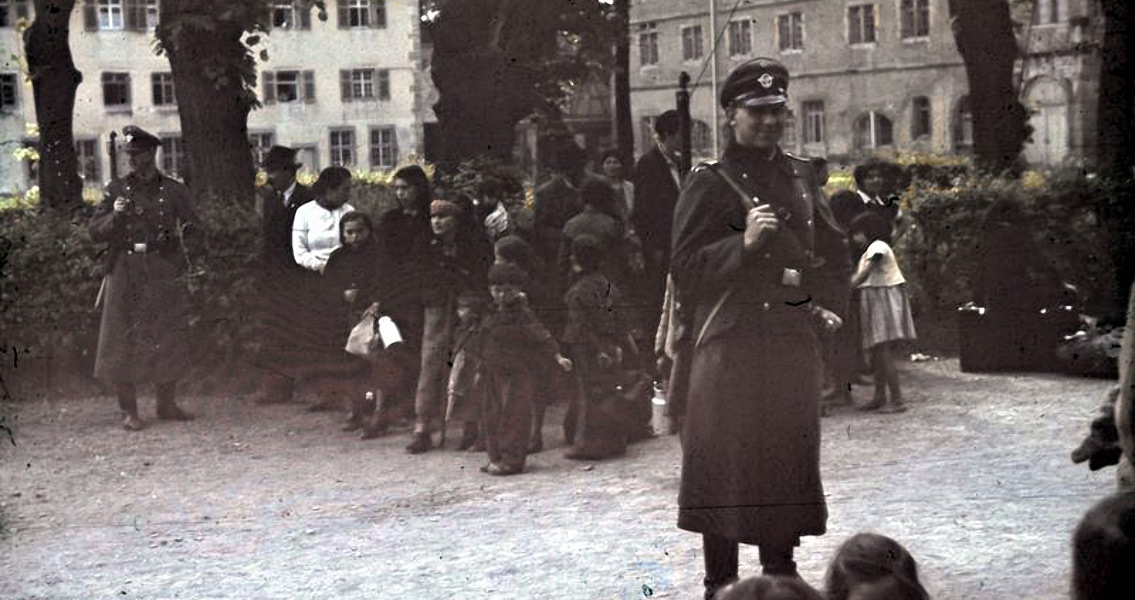<![CDATA[A new turn in the horrors of the Third Reich took place on 15th November, 1943, when Heinrich Himmler publicly declared that Gypsies and those of mixed Gypsy blood were to be considered on the same level as Jews, and incarcerated in Nazi concentration camps. Two main Gypsy tribes lived in Germany in this period, the Sinti and the Roma. Both would find themselves victims of the worst evils of the Nazi regime, with historians suggesting up to 250,000 Gypsies had been killed in Germany and Nazi occupied territories by the end of the war. Persecution of Gypsies in Germany and elsewhere in Europe predated the rise of the Nazis by centuries. Since 1899, police in Bavaria had kept a registry of all Roma and Sinti in the region, and set up a commission to coordinate police against Gypsies in Munich. In Britain in the nineteenth century, Gypsy families were forced into forest compounds in Hampshire and made to live there in harsh conditions. At a conference in Hungary in 1909 concerning the 'Gypsy Issue', one speaker suggested branding all Gypsies in the country to help with identifying them. The rise of the Nazis in Germany in 1933, saw this persecution reach sickening new levels. Nazi policies dictated that all races deemed "inferior" or "asocial" be removed from Germany. According to Nazi classification, Gypsies fell into both categories, but they also represented a problem to Nazi authorities in terms of determining who should be considered a Gypsy. A nomadic ethnic group originating from India, Gypsies arrived in Europe in the late Middle Ages. By the 1930s they could be found across the continent, but unlike Jews there were few religious records to keep track of Gypsies in Germany. In 1936, Dr. Robert Ritter, director of the Center for Research on Racial Hygiene and Demographic Biology in the Ministry of Health, commenced a racial study of Roma and Sinti. Through biological and anthropological examinations he attempted to find a way to classify and ultimately locate all the Gypsies living in Germany. Ultimately, Ritter's faux science failed to determine a way of classifying Roma and Sinti. Germany's 30,000 strong Gypsy population were all located and identified through interviews and intimidation - individuals forced to identify their relatives and acquaintances under threat of incarceration. In the same year the police were centralised and brought under the control of Himmler. The SS chief founded the Reich Central Office for the Suppression of the Gypsy Nuisance, a new agency which took over responsibility for dealing with Gypsies in Germany. Bureaucratic measures were put in place to systematically persecute Gypsies and they were swiftly brought under the control of the Nuremberg Laws; forced to wear black or brown triangles to remove any doubt as to their identity. Following the eruption of the Second World War, the treatment of Gypsies continued to worsen. Men were forced into municipal labour camps set up especially for Roma and Sinti. As Blitzkreig saw Nazi territory expand, Gypsy families were forcibly deported from Germany to other nations in the Greater German Reich. At the same time, thousands more Gypsies in Eastern Europe found themselves subject to the cruel discrimination of the Nazi regime. The 15th November 1943 saw this program become far more comprehensive. Gypsies started to be sent to concentration camps throughout Nazi occupied Europe, with 23,000 being sent to Auschwitz alone. Although a paucity of written records in Gypsy cultures means historians are unable to determine for sure how many Roma and Sinti were killed by the Third Reich, it is generally believed that their losses at the hands of the Nazis were second only to those suffered by the Jews.]]>
Black and Brown Triangles – Himmler Targets Gypsies
